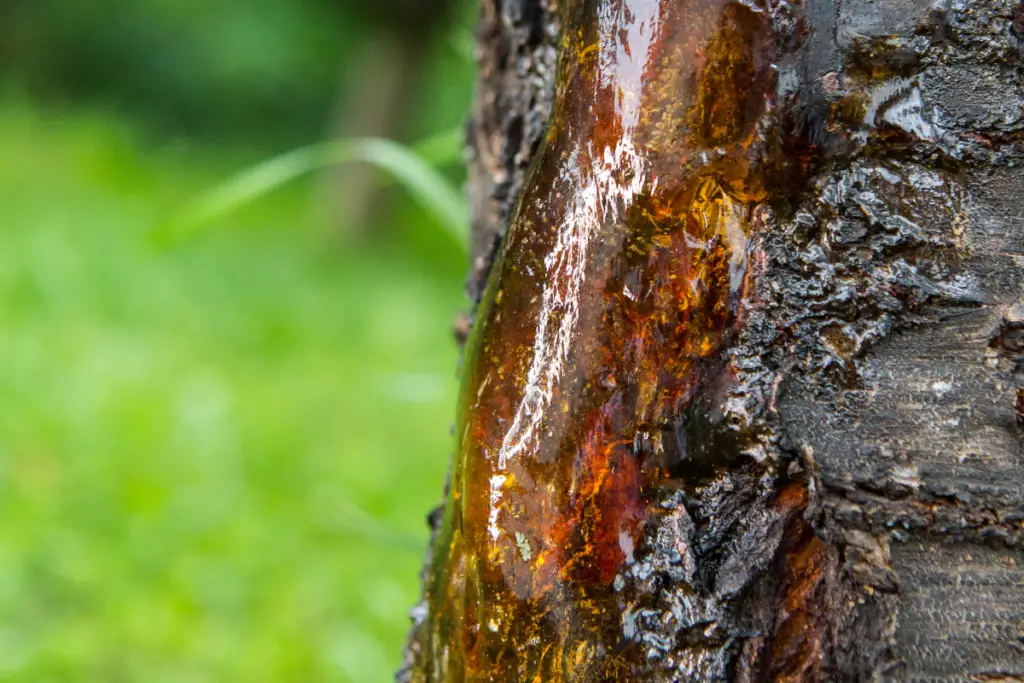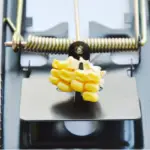Tulip poplars are beautiful trees that can add value to any landscape. However, they can be a nuisance when they start dripping sap.
The sap can damage cars, outdoor furniture, and walkways. It can also be unsightly and attract insects. Fortunately, there are several ways to stop tulip poplars from dripping sap.
One way to stop tulip poplars from dripping sap is to control the insects that produce the sap.
Aphids and soft-scale insects are two common sap-feeding insects that can cause tulip poplars to drip sap.
Controlling these insects can help reduce sap production. Another way to stop tulip poplars from dripping sap is to prune the tree.
Removing dead or diseased branches can improve the tree’s overall health and reduce sap production.
Additionally, pruning can help improve the tree’s appearance and shape.
Finally, applying insecticides or fungicides can help control insects and diseases that can cause tulip poplars to drip sap.
However, it is important to follow label instructions and use these products safely.

Table of Contents
Identifying the Problem
Tulip poplars are beautiful trees that can grow up to 90 feet tall and are known for their large tulip-shaped flowers. However, they are also known for their sticky sap which can be a nuisance for homeowners.
The sap is actually a byproduct of honeydew, which is produced by sap-feeding insects like aphids and soft scale.
When honeydew is produced, it drips down from the leaves and branches of the tree, leaving a sticky residue on anything it comes into contact with.
This can include cars, decks, and other outdoor furniture. The problem is especially prevalent during the spring when the insects are actively feeding on the young succulent new leaves of the tree.
One way to identify if the sticky residue is caused by honeydew from tulip poplars is to look for the presence of aphids or soft scale on the tree.
These insects can be seen on the leaves and branches of the tree and are relatively easy to identify.
Aphids are small, pear-shaped insects that can be green, black, or brown in color. Soft scale insects are small, oval-shaped insects that are covered in a waxy coating.
Another way to identify the problem is to look for the presence of black sooty mold on the leaves and branches of the tree.
This is a type of fungus that grows on the honeydew produced by the insects. The mold can make the tree look unsightly and can cause damage to the leaves if left untreated.
Overall, identifying the problem of sticky residue caused by honeydew from tulip poplars is relatively easy.
Homeowners can look for the presence of aphids or soft scale on the tree, as well as black sooty mold on the leaves and branches.
Once the problem has been identified, homeowners can take steps to prevent the insects from feeding on the tree and producing honeydew.
Causes of Dripping Sap
Tulip poplar trees are known for producing sap, which can be a nuisance for homeowners.
The sap is produced by the tree as a way to protect itself from damage and disease.
While sap production is a natural process, excessive sap dripping can be a sign of a problem with the tree.
Insects
One of the most common causes of excessive sap production in tulip poplar trees is insect infestation.
Sap-feeding insects like aphids and soft scale create honeydew, a sugary substance that can attract ants and wasps.
When these insects feed on the sap of the tree, they can cause the tree to produce more sap than usual.
This excess sap can then drip down the trunk and branches of the tree, creating a sticky mess.
Natural Enemies
While insects can be a cause of sap dripping, they also have natural enemies that can help control their populations.
Beneficial insects like ladybugs and lacewings are known to feed on aphids and other sap-feeding insects.
By introducing these beneficial insects into the garden, homeowners can help control insect populations and reduce sap dripping.
Tree Sap
Excessive sap dripping can also be caused by damage to the tree itself. When a tree is damaged, it will produce more sap as a way to protect itself.
This excess sap can then drip down the trunk and branches of the tree. Common causes of tree damage include pruning cuts, storm damage, and damage from animals.
Pests
In addition to insects, other pests can also cause excessive sap production in tulip poplar trees.
Woodpeckers, for example, can cause damage to the tree by pecking at the bark. This damage can then cause the tree to produce more sap than usual.
Other pests, like squirrels and rats, can also cause damage to the tree, leading to excessive sap production.
In conclusion, there are several causes of excessive sap production in tulip poplar trees, including insect infestation, damage to the tree, and pest damage.
By identifying the cause of the problem, homeowners can take steps to control sap dripping and keep their trees healthy.
Impact of Dripping Sap
Tulip poplars are known for their beautiful flowers and attractive foliage. However, they are also known for dripping sap, which can be a nuisance for homeowners.
The sap is a byproduct of aphids feeding on the sap of the young succulent new leaves of the tree.
The recent heavy rains have favored the development of lots of tender new growth on the trees, just the kind that aphids like to feed on.
The dripping sap can cause several problems.
First, it can be messy and unsightly.
Second, it can attract insects, such as ants and wasps, which can be a nuisance.
Third, it can lead to the growth of mold and sooty mold, which can discolor the stems, leaves, branches, trunk, and base of the tree.
The mold can also cause respiratory problems for humans and animals.
The dripping sap can also be harmful to the tree itself. The sap can attract insects that feed on the tree, such as the tulip tree scale and yellow poplar weevil.
These insects can damage the tree and cause it to die prematurely. The sap can also cause the tree to become stressed, which can make it more susceptible to disease and other problems.
To prevent the dripping sap, homeowners can take several steps. They can prune the tree to remove any dead or diseased branches.
They can also remove any branches that are touching the ground or other objects, as these can provide a pathway for insects to climb onto the tree.
They can also apply insecticides to the tree to kill any insects that are feeding on the sap.
In conclusion, the dripping sap from tulip poplars can be a nuisance for homeowners and can cause several problems for the tree itself. However, by taking the appropriate steps, homeowners can prevent the dripping sap and keep their trees healthy and beautiful.
Prevention and Control
Tulip poplar trees can be beautiful additions to any landscape, but they can also be a nuisance when they start dripping sap. Fortunately, there are several ways to prevent and control this problem.
Cultural Practices
One way to prevent sap dripping is to avoid overwatering the tree. Tulip poplars prefer well-drained soil, so make sure the tree is not sitting in water.
Additionally, pruning the tree regularly can help remove any dead or damaged branches that may attract insects.
Another cultural practice that can help is to encourage natural predators. Ladybugs and birds are known to feed on aphids, which are a common cause of sap dripping.
Planting flowers that attract these insects can help keep the aphid population under control.
Chemical Control
If cultural practices do not solve the problem, chemical control may be necessary. Insecticides can be applied to the tree to kill the insects that are causing the sap dripping.
There are two types of insecticides that can be used: sprays and soil drenches.
Sprays are applied directly to the tree and can be effective for controlling small populations of insects.
However, they may need to be reapplied every few weeks to maintain control. Soil drenches are applied to the soil around the tree and are taken up by the roots.
They are effective for controlling larger populations of insects and can provide longer lasting control.
Systemic insecticides, such as imidacloprid, are a type of soil drench that can be used for controlling aphids.
It is important to note that chemical control should only be used as a last resort and should be applied by a licensed arborist.
Additionally, it is important to follow all label instructions and safety precautions when using any insecticide.
In conclusion, preventing and controlling sap dripping in tulip poplar trees can be achieved through a combination of cultural practices and chemical control.
By following these methods, homeowners can enjoy the beauty of their trees without the nuisance of sap dripping.
Prices pulled from the Amazon Product Advertising API on:
Product prices and availability are accurate as of the date/time indicated and are subject to change. Any price and availability information displayed on [relevant Amazon Site(s), as applicable] at the time of purchase will apply to the purchase of this product.
Cultural Practices
Cultural practices can help reduce the amount of sap dripping from tulip poplars. Here are some tips:
- Watering: Proper watering can help reduce stress on the tree, which can help reduce sap flow. Water the tree regularly during dry periods to prevent drought stress. However, be careful not to overwater the tree, as this can lead to other problems, such as root rot.
- Improvement: Regular pruning of the tree can help improve its overall health and reduce the amount of sap flow. Remove any dead or diseased branches, as well as any branches that are crossing or rubbing against each other. This will help improve air circulation and reduce stress on the tree.
- Drought: During drought conditions, the tree may produce more sap as a defense mechanism. To reduce sap flow during drought conditions, provide the tree with extra water and mulch around the base of the tree to help retain moisture.
In addition to these cultural practices, it is important to avoid damaging the tree in any way. Avoid pruning the tree during the summer months, as this can stimulate sap flow.
Also, avoid damaging the bark of the tree, as this can lead to increased sap flow and make the tree more susceptible to disease and insect infestations.
By following these cultural practices, homeowners can help reduce the amount of sap dripping from tulip poplars, improving the health and appearance of the tree.
Professional Treatment
When home remedies and preventive measures don’t work, it may be time to consider professional treatment for tulip poplars that are dripping sap.
Professional arborists and tree care companies have access to specialized equipment and treatments that can help control pests and diseases that may be causing the sap to drip.
One common treatment is trunk injection, which involves injecting a pesticide or fungicide directly into the trunk of the tree.
This method is effective because it targets the problem at its source, providing long-lasting results.
However, it should only be performed by a licensed professional, as improper injection can damage the tree.
Another option is to use contact insecticides, such as malathion or carbaryl, which can be sprayed onto the tree to control sap-feeding insects like aphids and soft scales.
It’s important to note that more than one application may be needed, and the effectiveness of the treatment may vary depending on the severity of the infestation.
In some cases, it may be necessary to remove the affected branches or even the entire tree if it’s severely damaged or diseased.
A professional arborist can assess the situation and recommend the best course of action.
It’s also important to take steps to prevent future infestations, such as regularly pruning the tree to remove dead or damaged branches, and keeping the area around the tree clean and free of debris.
This can help reduce the likelihood of pests and diseases taking hold.
Overall, professional treatment can be an effective way to stop tulip poplars from dripping sap, but it’s important to choose a reputable and experienced tree care company to ensure the best results.
Conclusion
To stop tulip poplars from dripping sap, you can take several steps. Here is a summary of the actions you can take to address the issue:
- Identify the source: Ensure that the sap dripping is indeed coming from the tulip poplar tree. Sometimes, nearby trees or other sources may be the cause of the problem. Observe the tree closely to confirm the origin.
- Prune dead or damaged branches: Inspect the tree for any dead or damaged branches. These can often be a source of excessive sap production. Safely remove these branches using appropriate pruning techniques and tools.
- Minimize wounds: Avoid causing unnecessary wounds to the tree, as they can trigger sap flow. Be careful when using lawn mowers or other machinery around the tree to prevent accidental damage.
- Monitor insects and pests: Certain insects and pests, such as aphids, can stimulate increased sap production in trees. Check for signs of infestation and take appropriate measures to control them if necessary. Consult with a local arborist or horticulturist for advice on specific pest control methods.
- Avoid excessive watering: Overwatering the tree can lead to increased sap production. Ensure that the tulip poplar receives appropriate watering based on its needs and environmental conditions. Avoid excessive irrigation that may contribute to excessive sap flow.
- Be patient: In some cases, tulip poplars naturally produce more sap than other tree species. While you can take steps to minimize the dripping, it may not be possible to eliminate it completely. Accepting this natural characteristic of the tree may be necessary.
- Consult an arborist: If the sap dripping issue persists despite your efforts, or if you have concerns about the health of the tree, it is advisable to seek professional advice. An arborist or tree care specialist can assess the situation, provide specific recommendations, and offer further guidance.
Remember, it is crucial to prioritize safety when working with trees. If you are unsure about performing any tasks, consult a professional to avoid personal injury or tree damage.
- How to Build a Planter Box for Bamboo: A Step-by-Step Guide

- Can Robotic Lawnmowers Handle Steep Slopes?

- Do You Need a Specific Lawn for a Robotic Lawnmower? Expert Advice

- Are Robotic Lawnmowers Safe for Pets and Children? Safety Features of Robotic Lawnmowers

- Why Use Robotic Lawnmowers? Advantages of Using a Robotic Lawnmower

- Is the GARDENA SILENO City 300 Cordless or Corded? A Clear Answer






















